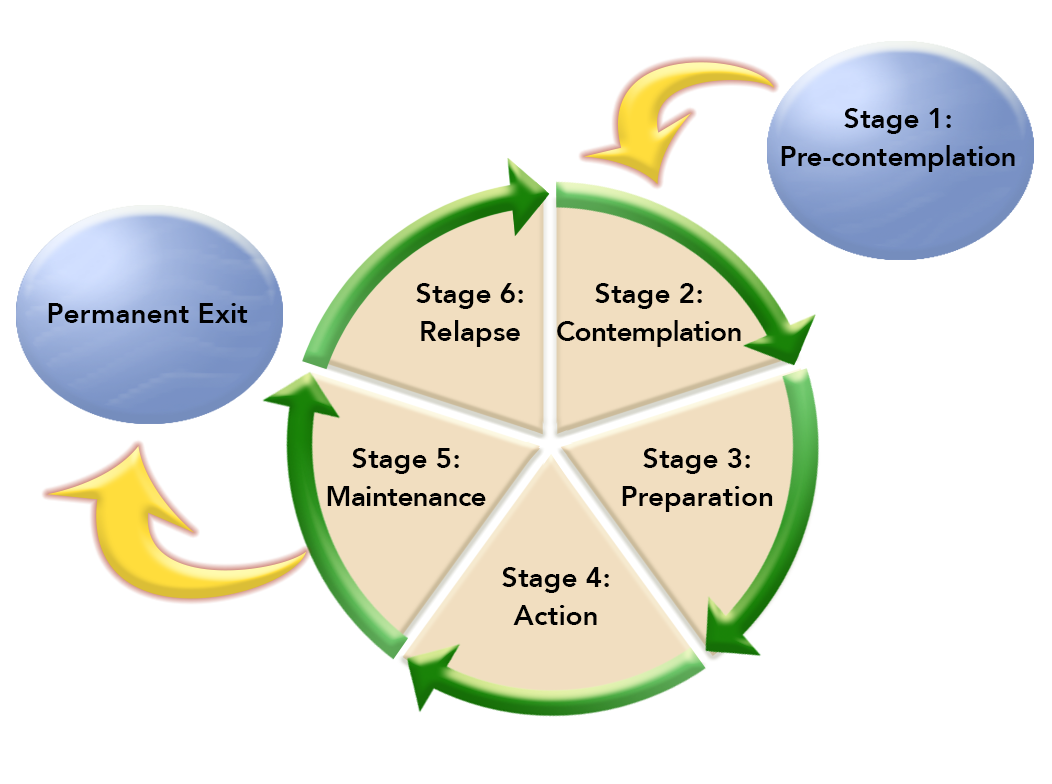- Build a relationship
- Diffuse the crisis
- Assess safety concerns
- Show empathy and caring
- Provide needed services in areas other than the specific risk
- Assess and affirm the individual’s strengths and capacity to change if he or she wishes to do so
- Provide information and feedback on the possible risks of behavior to raise the awareness of the possibility of change
- Listen for windows of opportunity where the person talks about problems, concerns and need to change
- Provide specificinformation
|
- Help tip the balance to favor change
- Evoke reasons to change and risks of not changing
- Continue to strengthen the client’s self- efficacy
- Strategically use open-ended questions, affirmations, and summarizing
- Have the person voice the problem, concern, and intention to change
- Have the person self-assess values, strengths, and needs
|
- Facilitate the development of a vision for their future
- Provide information on all available options
- Explore all available options, and the benefits and consequences of each
- Help the person set specific goal(s)
- Help the person develop the plan
- Help the person choose strategies to use, resources needed, and potential barriers to the plan
|
- Introduce and practice coping strategies to avoid, change, replace, or change a client’s reactions to triggers and conditions leading to problem behavior
- Suggest methods, provide support in trying them out, and help evaluate the effectiveness of those methods
- Keep steps small and incremental
- Teach skills
- Access resources for the specific target behavior
- Reward small steps of progress
- Assess success
- Make necessary changes in planning as the person continues to progress
|
- Assist in sustaining changes accomplished by the previous actions
- Help the person to develop the skills and self- efficacy to build a new life
- Build relapse roadmaps
- Prepare crisis plans for when a relapse might happen
- Review warning signs of a possible slip or relapse
- Help the person connect to other support systems for a healthier lifestyle
|
- Assist in processing the emotions resulting from the slip
- Help the person understand what happened to lead to another slip
- Help the person process the experience and use the slip as a learning experience
- Review the plan and commitment to continue
- Adjust the plan as needed
- Implement the plan (as adjusted)
|


